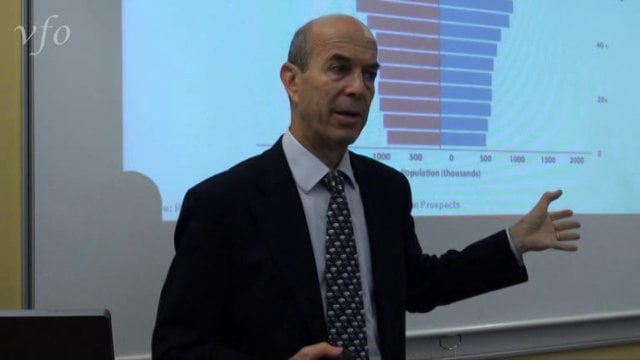
It is often said we are all made from stardust. Meteorites, such as those in the museum in Oxford, contain a remarkable ‘fingerprint’. The imprint of a time before our solar system was formed. Grains of stardust you can look at under a microscope; micron-sized grains of silicon carbide a billion years older than our solar system, spewed out from supernovae and giant stars, now trapped in the meteorites that were formed by the accretion of debris in the early development of our solar system.
But how can we be so certain of the origin and formation of these grains of dust? This is just one of the exciting questions discussed with Professor Alex Halliday when interviewed by Denis Noble for Voices from Oxford. Alex Halliday specializes in the chemistry of the planets, and is also the head of one the largest Divisions at the University of Oxford: Mathematical, Physical and Life Sciences. He studies the isotope nature of the composition of the earth and its evolution.
The unique properties of radio isotopes enable us to “trace the geological components and to determine where they came from and when they were formed.” They provide a unique view of the history of the universe and our solar system. A history locked in bits of rock.
We can use isotope properties in a variety of ways, Professor Halliday explains. The first of these is dating. Some radio isotopes with very long half lives are decaying over billions of years; others have very short half lives. A very sophisticated set of techniques have now been developed and modern mass spectrometry “has driven the science forward and opened up new opportunities”.
But it isn’t a fingerprint of time alone. Atomic masses of isotopes “will result in slightly different behaviour in natural processes” and by measuring the amount of one isotope over another “you can say something about temperature in the past.” It was the Nobel Prize winner, Harold Urey, who discovered the isotope deuterium, but who also was first to discover you could use the behaviour of isotopes to say something about the temperature of the oceans in the past.
Using this “forensic fingerprinting” with the properties of isotopes, Professor Halliday explains, we can also trace the source of components and where they came from, and this has produced some unexpected results. It was assumed that things were fairly well mixed up in the solar system because meteorites from the asteroid belt and from mars had roughly the same composition as samples from earth. But it was discovered about 20 years ago that there was something peculiar in the isotopic make¬¬ up of these meteorites. There were “some funny noble gas isotopic compositions.”
If you did selective leaching of them, gradually dissolving the entire meteorite, you are left with a few grains that were “unlike anything found on earth”. Thousands of these grains have been analysed with high precision for their isotopic composition and they are not normally found on the earth’s surface. They are fragments of dust, grains of silicon carbide, from other stars, that were brought into this solar system 4.5 billion years ago before it formed. These meteorites provide an amazing new archive for understanding how stars work. By using spectroscopy on stars we analyse their chemistry. But as Professor Halliday puts it “now we have samples of stars which is mind blowing.”
Raymond Noble
20 June 2013



